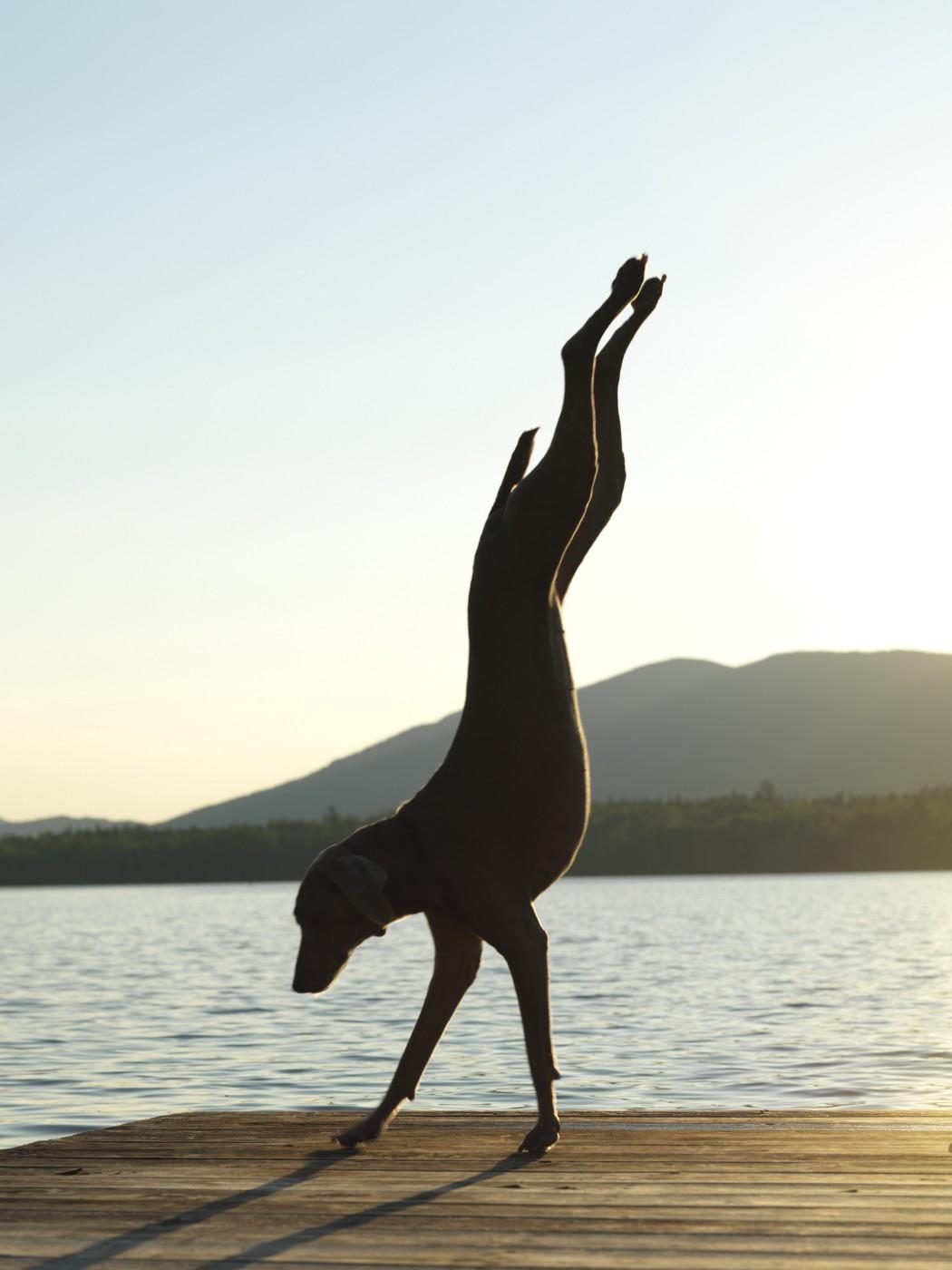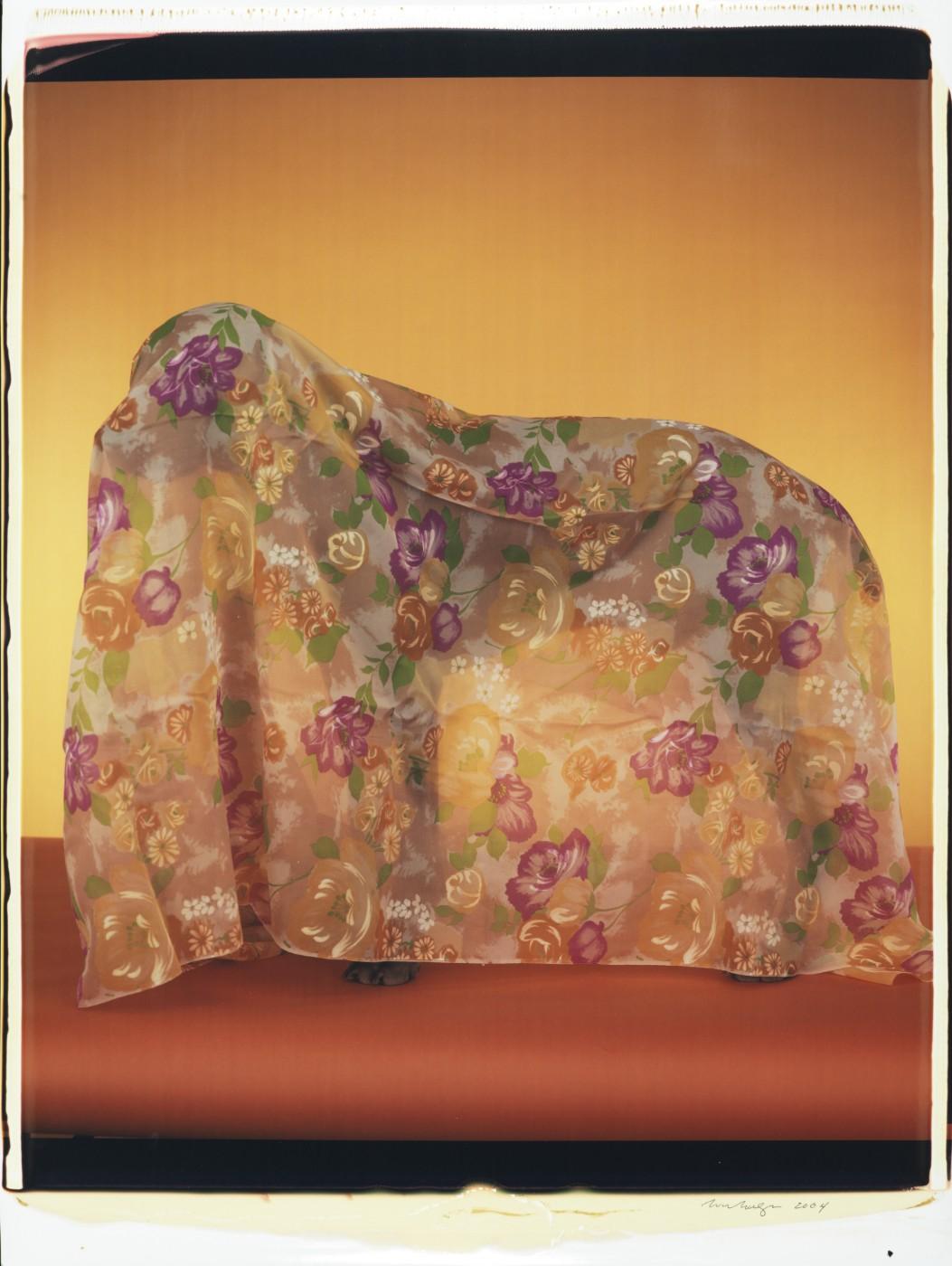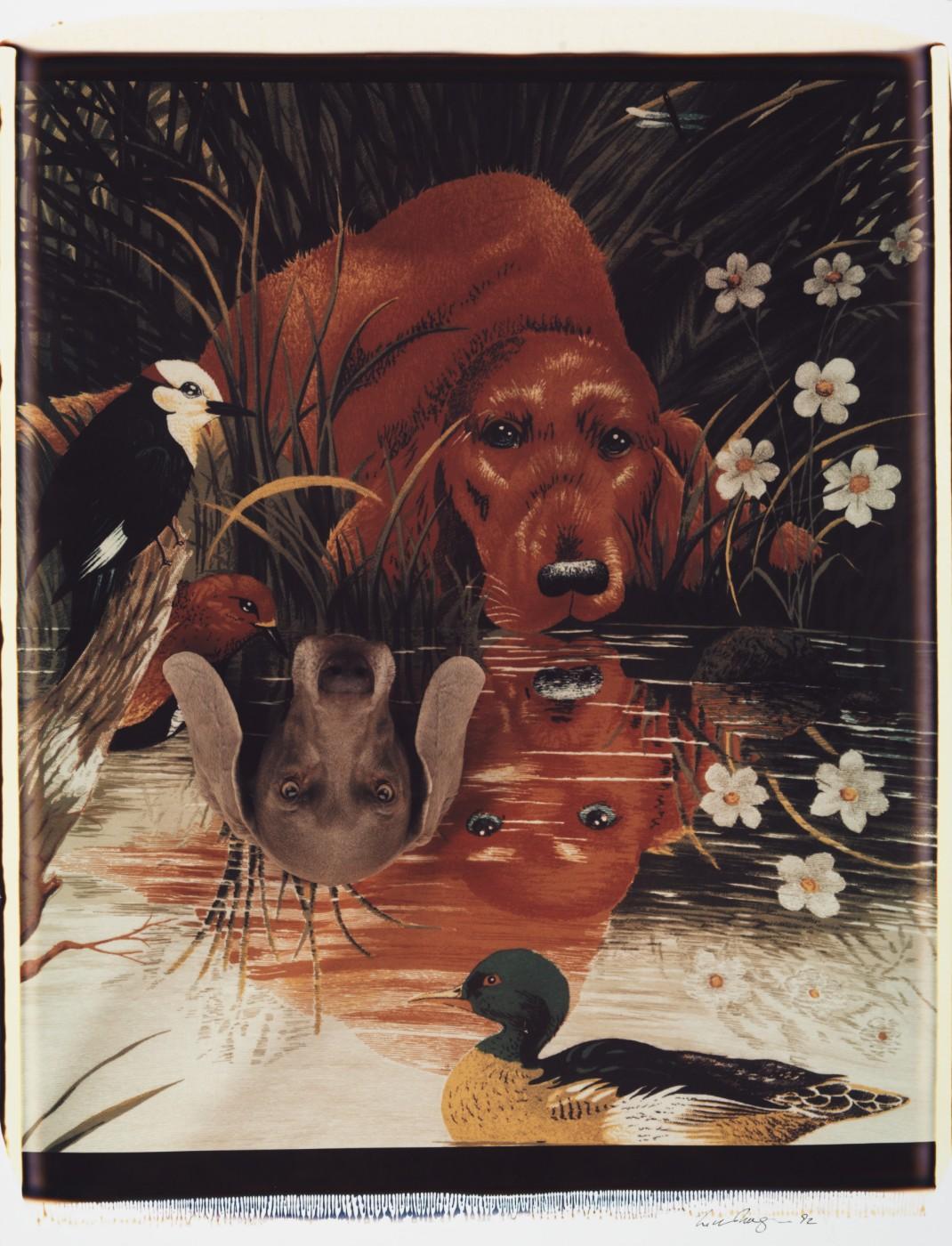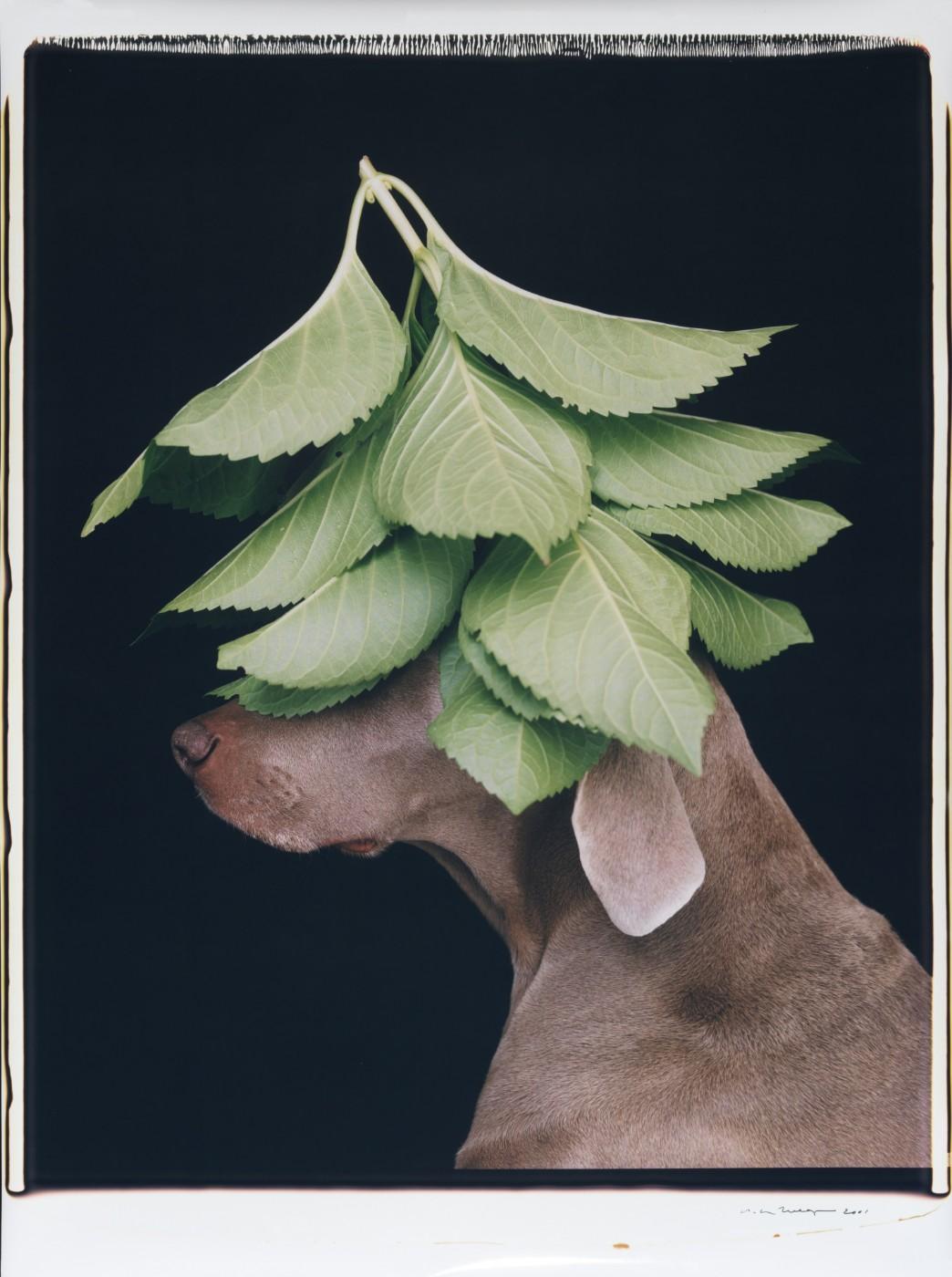Born in 1943, raised in rural Massachusetts, Wegman got his BA in studio art from Massachusetts College of Art in 1965. “I didn’t start out as a photographer. I love paintings. Photography started as an aside, as documentation for my painting, and performance video work.” He abandoned painting in the late 60s when he moved to Los Angeles and focused on video and photography. Long intrigued with mirrors, palindromes, twins, and find–the–difference puzzles, the earliest photograph in the show, untitled (leaves on/leaves off), a silver gelatin print from 1969 embodies elements of nature and the visual joke, dueling ideas that Wegman deploys with glee in every medium. At first glance, the black and white image appears to be a simple diptych of a tree seen in summer in full leaf and then totally bare in the fall, until we realize something is off. The season has not changed. The tree is the same except that Wegman has removed every leaf by hand.

William Wegman, Sent, 1991. Color Polaroids, each 24 x 20 in.
“Most of my pictures are a funny lie.” – William Wegman
All heads turned and smiles lit up the room as two athletic Weimaraners, Flo and Topper, bounded excitedly through the crowd followed by their guru, famed artist/photographer, William Wegman. The occasion was the opening reception for Outside In, a mind-expanding exhibition spanning over four decades in the prolific career of one of America’s most beloved artists. Set on a gentle grassy slope overlooking 45 acres nestled between Lake Champlain and Vermont’s Green Mountains the clean modern design of Shelburne Museum’s Pizzagalli Center for Art and Education provided a perfectly gorgeous rural setting for Wegman, who has never lost his childlike wonder in nature, as well as the dogs, who appreciated a romp outdoors on this sunny, early summer afternoon.
“I love seeing the surprised expressions when I bring the dogs,” Wegman tells me after taking several turns around the room weaving through the crowd as they file in to take their seats in the public screening space adjacent to the gallery where over 50 career-spanning paintings, photographs, collages, and drawings are displayed. Christine, Wegman’s wife, offered to take over the leashes as the dogs strained to be near their master, their eyes riveted on him when he stepped up to the podium. “The dogs love to work.” He explains to the crowd, “They are waiting for me to set something up for the camera.”
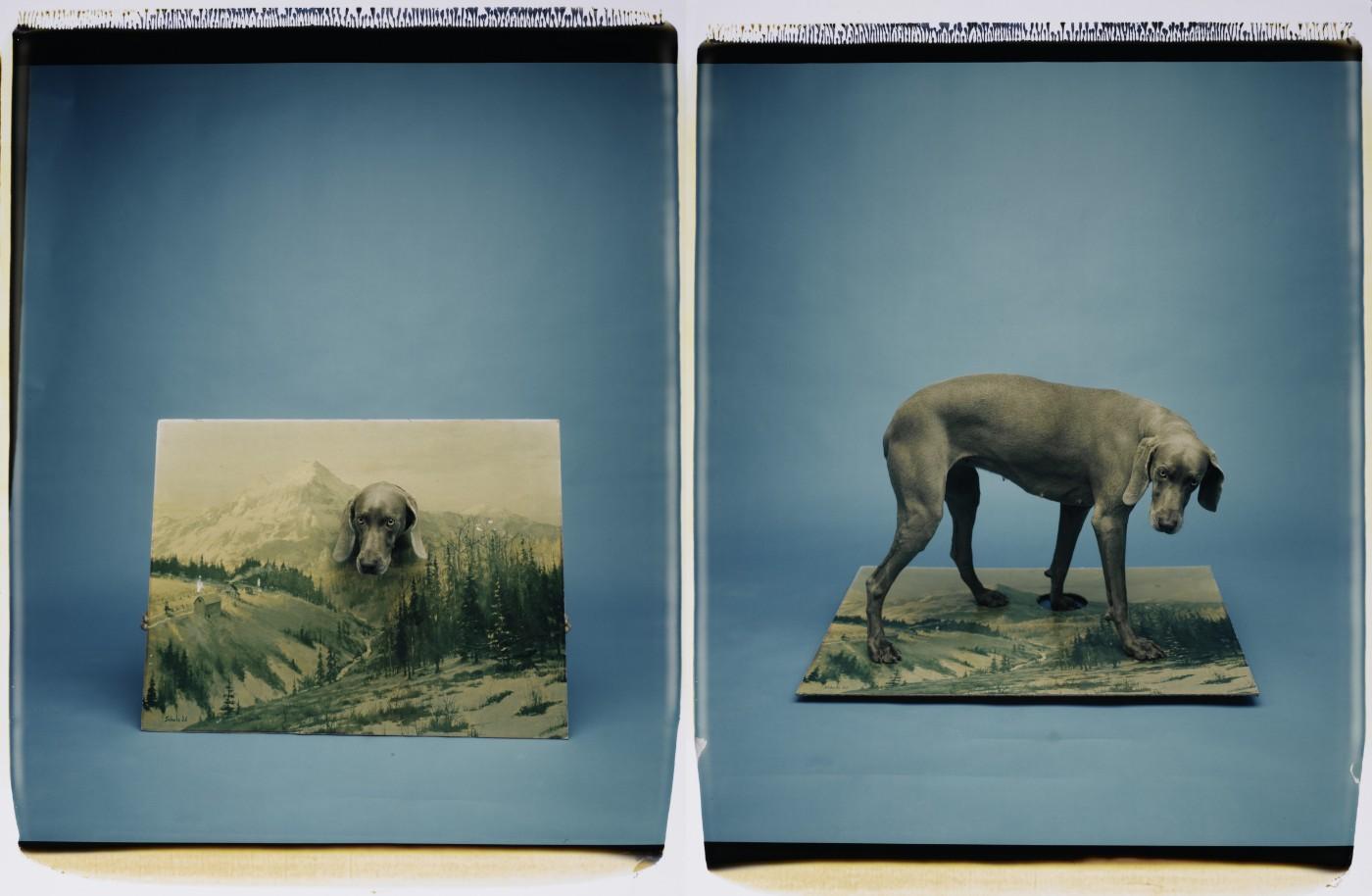
William Wegman, On and In the Landscape, 1988. Color Polaroid, 24 x 20 in.
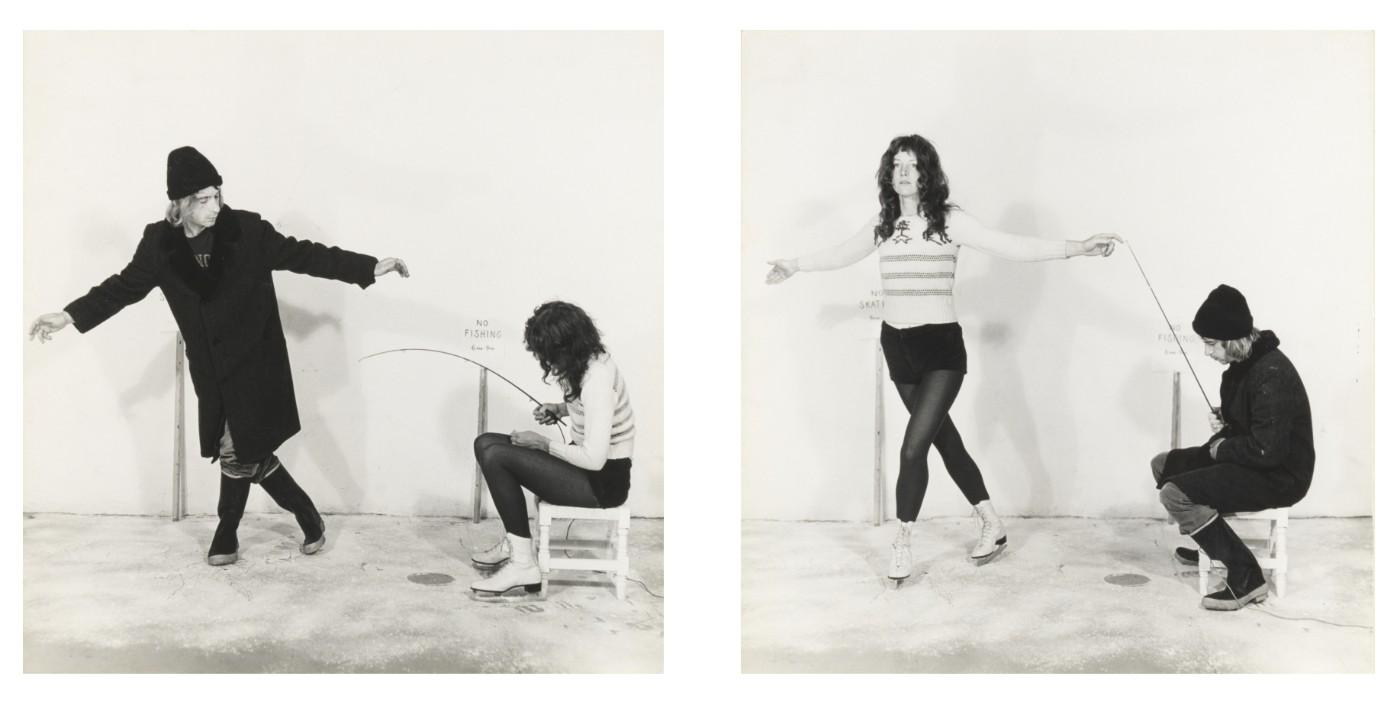
William Wegman, Illegal Fishing/Illegal Skating, 1971. Silver gelatin prints, each 11 x 10 3/4 in.
In 1970 Wegman adopted his first Weimaraner, Man Ray, named after the great surrealist. He tells us with a glint of mischief in his voice, “Man Ray’s niece was furious I’d named my dog for her famous uncle.” During the 1970’s Man Ray only appears occasionally in photographs. “In 1975 I got a Guggenheim and started painting on photographs. My first color photo and Man Ray’s debut in a 20 x 24 Polaroid occurred when he was 9-years-old.” Those large-format Polaroid instant photos with the distinctive drippy raw edge featuring a succession of dogs have become Wegman’s signature work. Only five of the bulky, steampunk-looking cameras were ever built. It was four years after Man Ray died in 1982 before Fay Ray appeared on the scene. “I found her in Nashville, Tennessee. Fay learned to look directly into the camera lens. She could be really scary looking.”
It is difficult to envision Wegman without his dogs. “Since 1970 I have had ten dogs, each one unique, and each one a Weimaraner.” The exhibition includes a wide selection of color Polaroids and the more recent digital pigment prints that explore the personalities as well as the physical “shades and variations within the individual” that make each dog a distinctive muse. In Handstanding (2011), we are awed by the dog’s dexterity, the beautifully balanced form like an Olympic gymnast set against the pale light of a setting or early morning sun. Daisy Nut Ball (1994), features Fay Ray bearing a red felt hat while holding an assortment of faux fruit, nuts, flowers, goofy popping eyeballs and novelty eyeglasses on her head. The end result harkens back to the fantastical portraits of the Italian Mannerist Giuseppe Arcimboldo (1526-1593).
In the mid-1980’s Wegman returned to painting while still working in photography. “I get sick of my work after awhile and I have to do something different. I discovered postcards. Postcards lead me to areas my mind won’t take me.” The Great Indoors, 2013, oil and postcards on wood panel, dominates the back wall of the gallery and is one of Wegman’s largest works. Each postcard within the larger composition acts as a point of departure, “I’m interested in what is along the edge.” Those edges are painted outward, expanded upon to both draw you into the deep perspective of the image and remind you of the flatness of the picture plane.
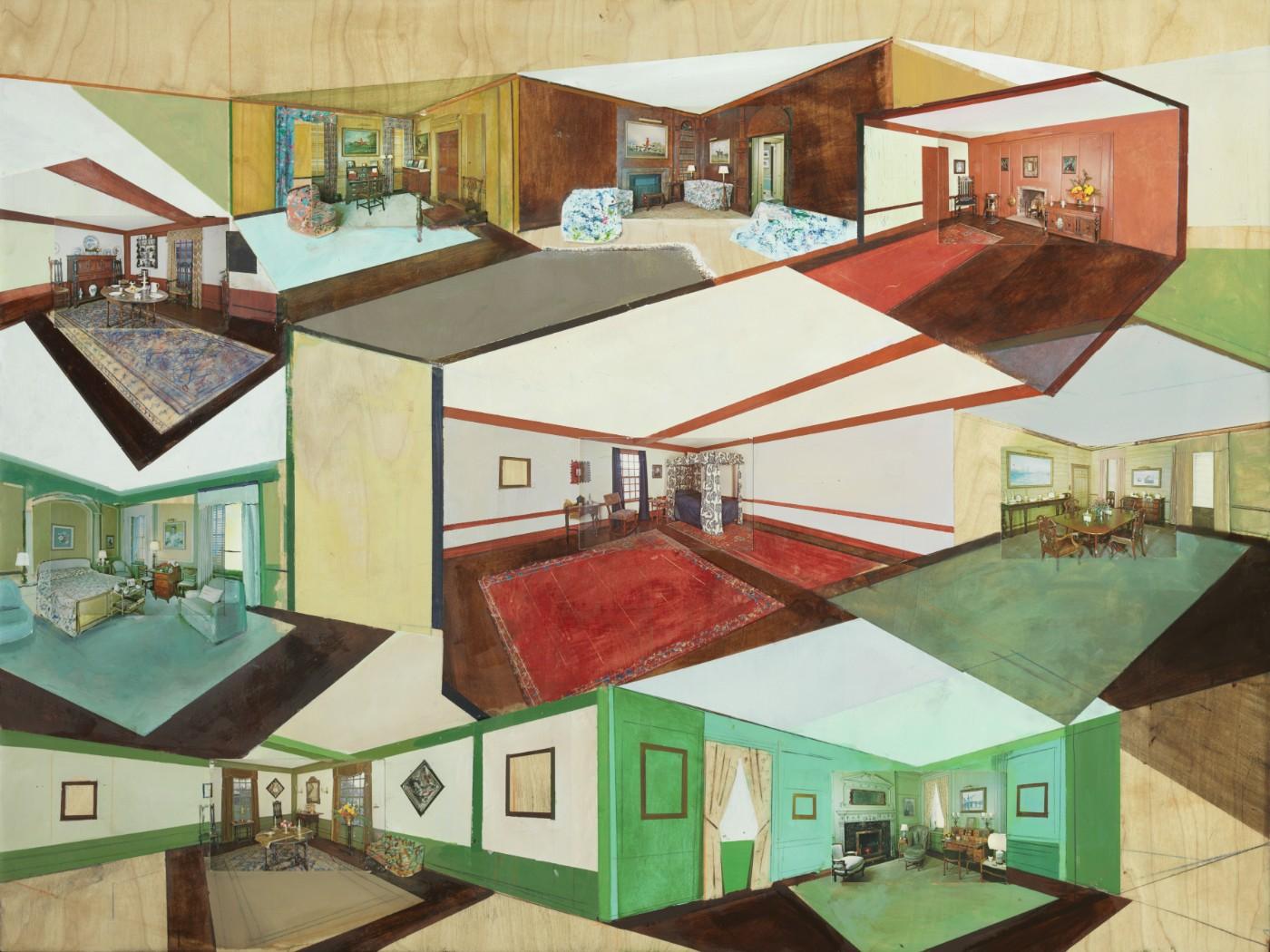
William Wegman, Collected Rooms, 2018. Oil and postcards on wood panel, 30 x 40 in.
Although Wegman embraces his mantel as “the dog-artist” the exhibition successfully imposes another narrative on his subject matter. Shelburne’s assistant curator Carolyn Bauer, whose admiration for Wegman’s work goes back to his days producing content for the Children’s Television Workshop Sesame Street, was the driving force that convinced him Vermont would be an ideal place to highlight his life-long fascination with the natural world. Wegman was charmed by the Shelburne’s “collection of collections” and completed two new paintings, Spiral Stair (2018) and Collected Rooms (2018) based upon antique postcards from the museum’s archives. The cubist-like work employs collage and multiple perspectives, paying homage to the Electra Havemeyer Webb Memorial Building and Prentis House on the museum’s campus.
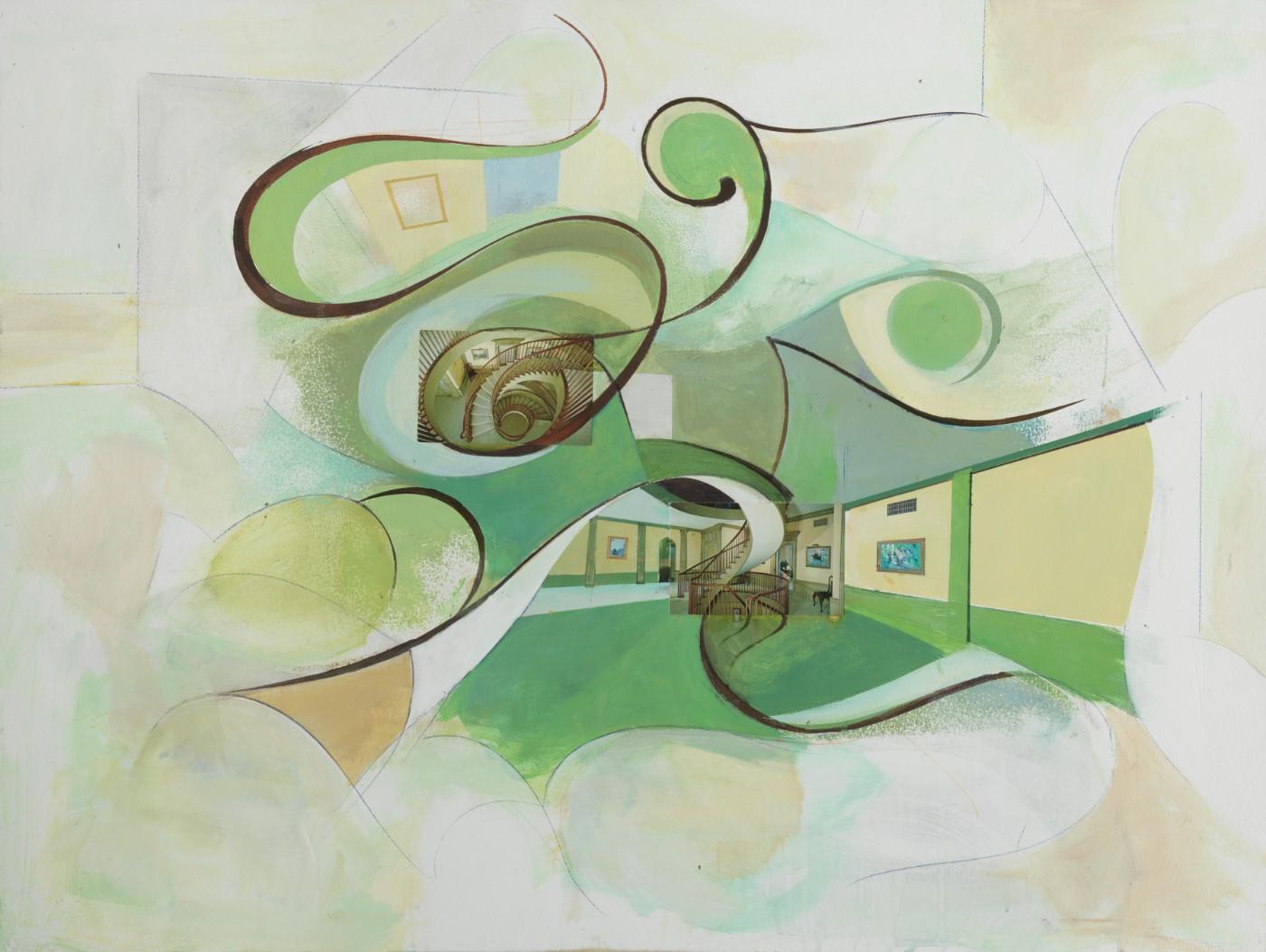
William Wegman, Spiral Stair, 2018. Oil and postcards on wood panel, 30 x 40 in.
During the Q&A following his presentation Wegman tossed out insightful tidbits; “Flo looks stunning in wigs.” “I don’t use treats to engage my dogs but I have my tricks.” “I have to reinvent myself with each dog.” And, ultimately, “I actually go insane if I don’t work.” Looking at his output of over 15,000 images, 40 books–20 of them for children, countless exhibitions at home and abroad, we believe him.
Known for presenting sensitively selected exhibitions where each piece carries weight and is given room to breathe, the Shelburne Museum’s William Wegman: Outside In adds up to more than the sum of its deliciously sly parts.




